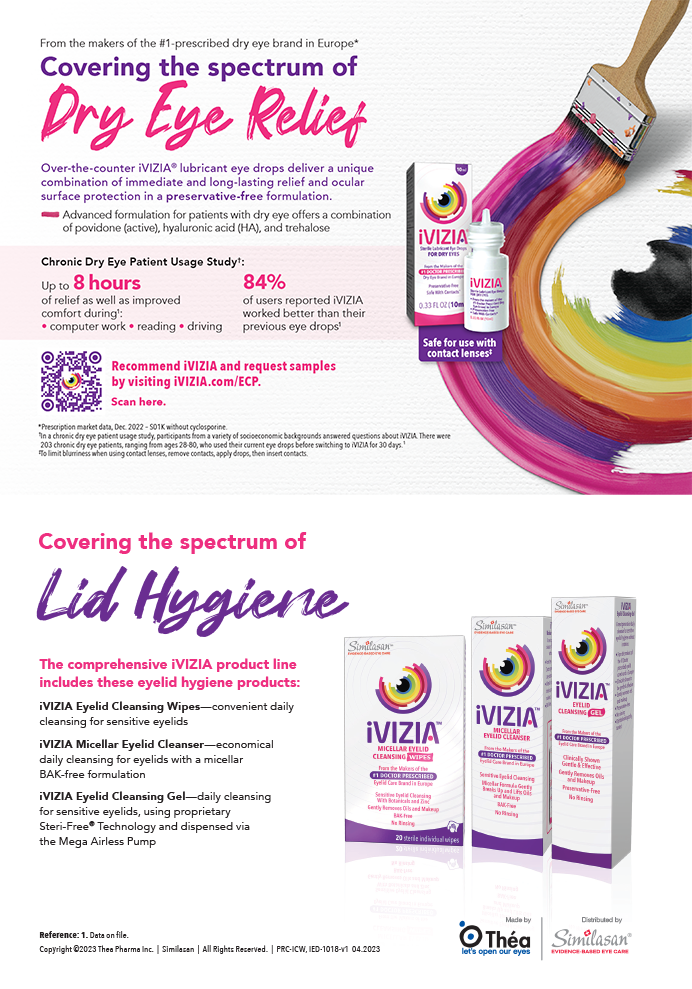
The American Medical Association (AMA) has weighed in on the issue of streetlights. The organization stated that blue-rich light-emitting diode (LED) lights create a driving hazard by reducing visual acuity and causing glare, disrupting people’s circadian sleep rhythms, and confusing birds, insects, and fish. Acting without any discernible input from the American Academy of Ophthalmology, the American Society of Cataract and Refractive Surgery, The Illuminating Engineering Society, or the Department of Energy, the AMA issued official guidance for communities on LED lighting systems for roadways.1 In a press release, neurosurgery resident and AMA Board Member Maya A. Babu, MD, MBA, stated, “Despite the energy efficiency benefits, some LED lights are harmful when used as street lighting.” Thank you for your input, Resident Physician Babu, but how do you know that LED streetlights are harmful?
There is solid evidence that blue light from the screens of computers and smartphones can have detrimental effects. Efforts to reduce people’s exposure to blue light screens are therefore appropriate, but screens are clearly very different from streetlights. In fact, the blue-white light in question has about the same wavelength profile as natural moonlight. Is moonlight particularly harmful? All artificial lighting has the potential to affect circadian rhythms. It is true that blue-white light influences these cycles more than yellow light, but has the societal cost of this disruption been weighed against the reduction in fatalities from improved nighttime roadway visibility?
While I will defer to others on the implications for birds, insects, and fish, the issues surrounding nighttime glare, streetlight wavelength profile and intensity, and driving safety are extremely complex. Blue-white LEDs tend to be brighter than the lights they replace. The additional light provides better visibility, but it can also cause glare. Blue-white light also causes more Rayleigh scattering than white light, but the former is better absorbed by melanin and hemoglobin.2 Simply put, there is ample scientific evidence that the amount of stray light reaching the fovea depends very little on wavelength.3-5 The automotive industry has widely adopted blue-white headlights because of their ability to provide better target illumination. Older drivers benefit significantly from these brighter headlights on their own cars, but they suffer more glare when confronted by these same oncoming headlights. With traffic fatalities accounting for more than 30,000 deaths annually in the United States alone, improved roadway visibility from headlights or streetlights seems to be a worthy goal.
This issue is so significant because the AMA is attempting to shape public policy at the local and national level by declaring blue-white LEDs to be hazardous based upon an incomplete and inadequate scientific assessment. The AMA’s membership includes about 15% of US doctors,6 and many critics believe that the actual physician membership is much lower. The AMA has been out of favor with most physicians for years, but for many, the last straw was the AMA’s robust support for the Patient Protection and Affordable Care Act. Nevertheless, to the public, the AMA represents the collective voice of US medicine, and now it is attempting to provide technical guidelines for civil lighting engineers. How long before the first lawsuit is filed over a traffic fatality occurring under the glow of streetlights that the AMA has declared to be hazardous?
Personally, I find the twinkling glow of gas lamps to be beautiful, but they provide precious little nighttime visibility. Although blue-white LED streetlights may not be as aesthetically pleasing, declaring them to be hazardous is an unsubstantiated and reckless overreach by an out-of-control organization.
Steven J. Dell, MD
Chief Medical Editor
1. AMA adopts community guidance to reduce the harmful human and environmental effects of high intensity street lighting. AMA website. June 14, 2016. http://bit.ly/28Q0Bx8. Accessed July 20, 2016.
2. Mainster MA, Timberlake GT. Why HID headlights bother older drivers. Br J Ophthalmol. 2003;87(1):113-117.
3. Van den Berg TJ. Light scattering by donor lenses as a function of depth and wavelength. Invest Ophthalmol Vis Sci. 1997;38(7):1321-1332.
4. Wooten BR, Geri GA. Psychophysical determination of intraocular light scatter as a function of wavelength. Vision Res. 1987;27(8):1291-1298.
5. Whitaker D, Steen R, Elliott DB. Light scatter in the normal young, elderly, and cataractous eye demonstrates little wavelength dependency. Optom Vis Sci. 1993;70(1):963-968.
6. Collier R. American Medical Association membership woes continue. CMAJ. 2011;183(11):E713-E714.


